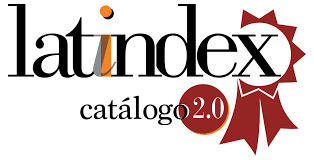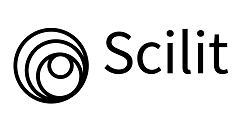Estimulação magnética transcraniana: o que o psiquiatra deve saber?
DOI:
https://doi.org/10.25118/2236-918X-6-3-3Palabras clave:
Estimulação magnética transcraniana, neuromodulação, depressão maiorResumen
A estimulação magnética transcraniana (EMT) é uma técnica de neuromodulação não invasiva, com efeitos adversos mínimos e poucas contraindicações. O procedimento vem sendo utilizado no arsenal terapêutico dos pacientes com depressão, mostrando benefícios terapêuticos comprovados em pesquisas no mundo todo. O último guideline europeu publicado sobre o tema, em 2014, coloca a EMT repetitiva de alta frequência aplicada no córtex pré-frontal dorsolateral esquerdo para depressão como nível A de evidência (eficácia definida). A técnica foi aprovada pelo Food and Drug Administration nos EUA para tratamento de depressão em 2008 e reconhecida em 2012 pelo Conselho Federal de Medicina como ato médico válido em todo o território nacional.
Descargas
Métricas
Citas
Lefaucheur JP, André-Obadia N, Antal A, Ayache SS, Baeken C, Benninger DH, et al. Evidence-based guidelines on the therapeutic use of repetitive transcranial magnetic sti ulati on (rTMS). Clin Neurophysiol. 2014;125:2150-206. https://doi.org/10.1016/j.clinph.2014.05.021
Rush AJ, Trivedi MH, Wisniewski SR, Stewart JW, Nierenberg AA, Thase ME, et al. Bupropion-SR, sertraline, or venlafaxine-XR after failure of SSRIs for depression. N Engl J Med. 2006;354:1231-42. https://doi.org/10.1056/NEJMoa052963
Trivedi MH, Fava M, Wisniewski SR, Thase ME, Quitkin F, Warden D, et al. Medication augmentation after the failure of SSRIs for depression. N Engl J Med. 2006;354:1243-52. https://doi.org/10.1056/NEJMoa052964
Berlim MT, Turecki G. Definition, assessment, and staging of treatment-resistant refractory major depression: a review of current concepts and methods. Can J Psychiatry. 2007;52:46-54.
https://doi.org/10.1177/070674370705200108
Brunoni AR, Shiozawa P, Simis M. Neuromodulação por estimulação magnética transcraniana (EMT) e por estimulação transcraniana por corrente contínua (ETCC). In: Forlenza OV, Miguel EC, editores. Clínica Psiquiátrica de Bolso. São Paulo: Manole; 2014. p. 625-39.
Rosa MA, Rosa MO. Estimulação magnética transcraniana em psiquiatria: guia básico. 2ª ed. São Paulo: Sarvier; 2013.
Brasil-Neto JP, Boechat-Barros R. Estimulação magnética transcraniana. In: Fregni F, Boggio PS, Brunoni AR. Neuromodulação terapêutica. São Paulo: Sarvier; 2012. p. 53-64.
Brunoni AR, Boggio PS, Fregni F. Estimulação elétrica no sistema nervoso central: uma breve revisão histórica. In: Fregni F, Boggio PS, Brunoni AR. Neuromodulação terapêutica. São Paulo: Sarvier; 2012. p. 3-20.
Kolin A, Brill NQ, Broberg PJ. Stimulation of irritable tissues by means of an alternating magnetic field. Proc Soc Exp Biol Med. 1959;102:251-3. https://doi.org/10.3181/00379727-102-25209
Barker AT, Jalinous R, Freeston IL. Non-invasive magnetic stimulation of human motor cortex. Lancet. 1985;1:1106-7. https://doi.org/10.1016/S0140-6736(85)92413-4
Bickford RG, Guidi M, Fortesque P, Swenson M. Magnetic stimulation of human peripheral nerve and brain: response enhancement by combined magnetoelectrical technique. Neurosurgery.1987;20:110-6. https://doi.org/10.1097/00006123-198701000-00025
Zyss T. [Will electroconvulsive therapy induce seizures: magnetic brain stimulati on as hypothesis of a new psychiatric therapy]. Psychiatr Pol. 1992;26:531-41.
Pascual-Leone A, Valls-Sole J, Toro C, Wassermann EM, Hallett M. Resetting of essential tremor and postural tremor in Parkinson's disease with transcranial magnetic stimulation. Muscle Nerve. 1994;17:800-7. https://doi.org/10.1002/mus.880170716
George MS, Wasserman EM, Williams WA, Callahan A, Ketter TA, Basser P, et al. Daily repetitive transcranial magnetic stimulation (rTMS) improves mood in depression. Neuroreport. 1995;6:1853-6. https://doi.org/10.1097/00001756-199510020-00008
Brasil-Neto JP, Araújo VP, Carneiro CR. Postexercise facilitation of motor evoked potentials elicited by ipsilateral voluntary contraction. Muscle Nerve. 1999;22:1710-2.
https://doi.org/10.1002/(SICI)1097-4598(199912)22:12<1710::AID-MUS14>3.0.CO;2-8
Brasil-Neto JP, Boechat-Barros R, da Mota-Silveira DA. [The use of slow-frequency transcranial magnetic stimulation in the treatment of depression at Brasília University Hospital: preliminary findings]. Arq Neuropsiquiatr. 2003;61:83-6. https://doi.org/10.1590/S0004-282X2003000100015
Caumo W. Segurança no uso da neuromodulação. In: Fregni F, Boggio PS, Brunoni AR. Neuromodulação terapêutica. São Paulo: Sarvier; 2012. p. 30-45.
Rossi S, Hallett M, Rossini PM, Pascual-Leone A; Safety of TMS Consensus Group. Safety, ethical considerations, and application guidelines for the use of transcranial magnetic stimulation in clinical practice and research. Clin Neurophysiol. 2009;120:2008-39. https://doi.org/10.1016/j.clinph.2009.08.016
Epstein CM, Davey KR. Iron-core coils for transcranial magnetic stimulation. J Clin Neurophysiol. 2002;19:376-81. https://doi.org/10.1097/00004691-200208000-00010
Rossi S. Safety of TMS with a note on regulatory aspects. In: Miniussi C, Paulus W, Rossini PM. Transcranial brain stimulation. Boca Raton: CRC Press; 2012. p. 415-27. https://doi.org/10.1201/b14174-22
Deng ZD, Lisanby SH, Peterchev AV. Electric field depth-focality tradeoff in transcranial magnetic stimulation: simulation comparison of 50 coil designs. Brain Stimul. 2013;6:1-13. https://doi.org/10.1016/j.brs.2012.02.005
Machado A, Haertel LM. Neuroanatomia funcional. 3ª ed. São Paulo: Ateneu; 2014.
Fitzgerald PB, Hoy K, McQueen S, Maller JJ, Herring S, Segrave R, et al. A randomized trial of rTMS targeted with MRI based neuronavigation in treatment-resistant depression. Neuropsychopharmacology. 2009;34:1255-62. https://doi.org/10.1038/npp.2008.233
Gershon AA, Dannon PN, Grunhaus L. Transcranial magnetic stimulation in the treatment of depression. Am J Psychiatry. 2003;160:835-45. https://doi.org/10.1176/appi.ajp.160.5.835
McDonald WM, Durkalski V, Ball ER, Holtzheimer PE, Pavlicova M, Lisanby SH, et al. Improving the antidepressant efficacy of transcranial magnetic stimulation: maximizing the number of stimulations and treatment location in treatment-resistant depression. Depress Anxiety. 2011;28:973-80. https://doi.org/10.1002/da.20885
Wassermann EM. Risk and safety of repetitive transcranial magnetic stimulation: report and suggested guidelines from the International Workshop on the Safety of Repetitive Transcranial Magnetic Stimulation, June 5-7, 1996. Electroencephalogr Clin Neurophysiol. 1998;108:1-16. https://doi.org/10.1016/S0168-5597(97)00096-8
Loo CK, McFarquhar TF, Mitchell PB. A review of the safety of repetitive transcranial magnetic stimulation as a clinical treatment for depression. Int J Neuropsychopharmacol. 2008;11:131-47. https://doi.org/10.1017/S1461145707007717
Brunoni AR, Teng CT, Correa C, Imamura M, Brasil-Neto JP, Boechat R, et al. Neuromodulation approaches for the treatment of major depression: challenges and recommendations from a working group meeting. Arq Neuropsiquiatr. 2010;68:433-51. https://doi.org/10.1590/S0004-282X2010000300021
Xia G, Gajwani P, Muzina DJ, Kemp DE, Gao K, Ganocy SJ, et al. Treatment-emergent mania in unipolar and bipolar depression: focus on repetitive transcranial magnetic stimulation. Int J Neuropsychopharmacol. 2008;11:119-30. https://doi.org/10.1017/S1461145707007699
O'Reardon JP, Solvason HB, Janicak PG, Sampson S, Isenberg KE, Nahas Z, et al. Efficacy and safety of transcranial magnetic stimulation in the acute treatment of major depression: a multisite randomized controlled trial. Biol Psychiatry. 2007;62:1208-16. https://doi.org/10.1016/j.biopsych.2007.01.018
George MS, Lisanby SH, Avery D, McDonald WM, Durkalski V, Pavlicova M, et al. Daily left prefrontal transcranial magnetic stimulation therapy for major depressive disorder: a shamcontrolled randomized trial. Arch Gen Psychiatry. 2010;67:507-16. https://doi.org/10.1001/archgenpsychiatry.2010.46
Perera T, George MS, Grammer G, Janicak PG, Pascual-Leone A, Wirecki TS. The Clinical TMS Society consensus review and treatment recommendati ons for TMS therapy for major depressive disorder. Brain Sti mul. Forthcoming 2016. https://doi.org/10.1016/j.brs.2016.03.010
Berlim MT, Van den Eynde F, Daskalakis ZJ. Clinically meaningful effi cacy and acceptability of low-frequency repeti ti ve transcranial magnetic stimulation (rTMS) for treating primary major depression: a meta-analysis of randomized, double-blind and sham-controlled trials. Neuropsychopharmacology. 2013;38:543-51. https://doi.org/10.1038/npp.2012.237
Levkovitz Y, Isserles M, Padberg F, Lisanby SH, Bystritsky A, Xia G, et al. Efficacy and safety of deep transcranial magnetic stimulation for major depression: a prospective multi center randomized controlled trial. World Psychiatry. 2015;14:64-73. https://doi.org/10.1002/wps.20199
Bares M, Kopecek M, Novak T, Stopkova P, Sos P, Kozeny J, et al. Low frequency (1-Hz), right prefrontal repetitive transcranial magnetic stimulation (rTMS) compared with venlafaxine ER in the treatment of resistant depression: a doubleblind, single-centre, randomized study. J Aff ect Disord. 2009;118:94-100. https://doi.org/10.1016/j.jad.2009.01.032
Fregni F, Santos CM, Myczkowski ML, Rigolino R, Gallucci-Neto J, Barbosa ER, et al. Repetitive transcranial magnetic stimulation is as effective as fluoxetine in the treatment of depression in patients with Parkinson's disease. J Neurol Neurosurg Psychiatry. 2004;75:1171-4. https://doi.org/10.1136/jnnp.2003.027060
Grunhaus L, Dannon PN, Schreiber S, Dolberg OH, Amiaz R, Ziv R, et al. Repetitive transcranial magnetic stimulation is as effective as electroconvulsive therapy in the treatment of nondelusional major depressive disorder: an open study. Biol Psychiatry. 2000;47:314-24.
https://doi.org/10.1016/S0006-3223(99)00254-1
Slotema CW, Blom JD, Hoek HW, Sommer IE. Should we expand the toolbox of psychiatric treatment methods to include Repetitive Transcranial Magnetic Stimulation (rTMS)? A metaanalysis of the efficacy of rTMS in psychiatric disorders. J Clin Psychiatry. 2010;71:873-84.
https://doi.org/10.4088/JCP.08m04872gre
Berlim MT, Van den Eynde F, Daskalakis ZJ. Efficacy and acceptability of high frequency repetitive transcranial magnetic stimulation (rTMS) versus electroconvulsive therapy (ECT) for major depression: a systematic review and metaanalysis of randomized trials. Depress Anxiety. 2013;30:614-23. https://doi.org/10.1002/da.22060
Ren J, Li H, Palaniyappan L, Liu H, Wang J, Li C, et al. Repeti ti ve transcranial magneti c sti mulati on versus electroconvulsive therapy for major depression: a systemati c review and meta-analysis. Prog Neuropsychopharmacol Biol Psychiatry. 2014;51:181-9.
https://doi.org/10.1016/j.pnpbp.2014.02.004
Aleman A, Sommer IE, Kahn RS. Efficacy of slow repetitive transcranial magnetic stimulation in the treatment of resistant auditory hallucinations in schizophrenia: a meta-analysis. J Clin Psychiatry. 2007;68:416-21. https://doi.org/10.4088/JCP.v68n0310
Tranulis C, Sepehry AA, Galinowski A, Sti p E. Should we treat auditory hallucinations with repetitive transcranial magnetic stimulation? A metaanalysis. Can J Psychiatry. 2008;53:577-86. https://doi.org/10.1177/070674370805300904
Freitas C, Fregni F, Pascual-Leone A. Metaanalysis of the effects of repetitive transcranial magnetic stimulation (rTMS) on negative and positive symptoms in schizophrenia. Schizophr Res. 2009;108:11-24. https://doi.org/10.1016/j.schres.2008.11.027
Demeulemeester M, Amad A, Bubrovszky M, Pins D, Thomas P, Jardri R. What is the real eff ect of 1-Hz repetitive transcranial magnetic stimulation on hallucinations? Controlling for publication bias in neuromodulation trials. Biol Psychiatry. 2012;71:e15-6. https://doi.org/10.1016/j.biopsych.2011.10.010
Slotema CW, Blom JD, van Lutt erveld R, Hoek HW, Sommer IE. Review of the efficacy of transcranial magnetic stimulation for auditory verbal hallucinations. Biol Psychiatry. 2014;76:101-10. https://doi.org/10.1016/j.biopsych.2013.09.038
Cole JC, Green Bernacki C, Helmer A, Pinninti N, O'reardon JP. Efficacy of Transcranial Magnetic Stimulation (TMS) in the treatment of schizophrenia: a review of the literature to date. Innov Clin Neurosci. 2015;12:12-9.
Dougall N, Maayan N, Soares-Weiser K, McDermott LM, McIntosh A. Transcranial magnetic stimulation for schizophrenia. Schizophr Bull. 2015;41:1220-2. https://doi.org/10.1093/schbul/sbv121
Enokibara M, Trevizol A, Shiozawa P, Cordeiro Q. Establishing an effective TMS protocol for craving in substance addiction: is it possible? Am J Addict. 2016;25:28-30. https://doi.org/10.1111/ajad.12309
Brasil, Conselho Federal de Medicina. Resolução n. 1.986, de 02 de maio de 2012 [Internet]. Diário Oficial da União, 02 maio 2012. Seção I, p. 88. http://portalmedico.org.br/resolucoes/CFM/2012/1986_2012.pdf
Brasil, Comissão Nacional de Honorários Médicos. Resolução normativa CNHM n. 13, de 2013 [Internet]. http://amb.org.br/_arquivos/_downloads/883209001358955255_RNCNHM013_2013_timbrado_ok.pdf
Descargas
Publicado
Cómo citar
Número
Sección
Licencia

Esta obra está bajo una licencia internacional Creative Commons Atribución-NoComercial 4.0.
Debates em Psiquiatria permite que el (los) autor (es) mantenga(n) sus derechos de autor sin restricciones. Permite al (los) autor (es) conservar sus derechos de publicación sin restricciones. Los autores deben garantizar que el artículo es un trabajo original sin fabricación, fraude o plagio; no infringe ningún derecho de autor o derecho de propiedad de terceros. Los autores también deben garantizar que cada uno atendió a los requisitos de autoría conforme a la recomendación del ICMJE y entienden que, si el artículo o parte de él es fallido o fraudulento, cada autor comparte la responsabilidad.
Reconocimiento-NoComercial 4.0 internacional (CC BY-NC 4.0) - Debates em Psiquiatria es regida por la licencia CC-BY-NC
Usted es libre de:
- Compartir — copiar y redistribuir el material en cualquier medio o formato
- Adaptar — remezclar, transformar y crear a partir del material
El licenciador no puede revocar estas libertades mientras cumpla con los términos de la licencia. Bajo las condiciones siguientes:
- Reconocimiento — Debe reconocer adecuadamente la autoría, proporcionar un enlace a la licencia e indicar si se han realizado cambios<. Puede hacerlo de cualquier manera razonable, pero no de una manera que sugiera que tiene el apoyo del licenciador o lo recibe por el uso que hace.
- NoComercial — No puede utilizar el material para una finalidad comercial.
No hay restricciones adicionales — No puede aplicar términos legales o medidas tecnológicas que legalmente restrinjan realizar aquello que la licencia permite.






























